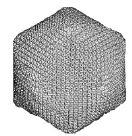Plant Pathology, Department of

James Van Etten Publications
Document Type
Article
Date of this Version
3-3-2015
Citation
Proc Natl Acad Sci U S A. 2015 Mar 3; 112(9): E927.
Published online 2015 Feb 5.
doi: 10.1073/pnas.1424665112
PMCID: PMC43527
Abstract
We agree with Kjartansdóttir et al. (1) that extreme caution must be used when interpreting high-throughput sequencing results in new hosts. The situation demands thorough investigation and validation beyond the identification of a few sequencing reads. However, we believe it is unlikely that random laboratory contamination explains the results reported in Yolken et al. (2) for the following reasons. ...
Therefore, the conclusions in our report are based not only on “a few sequence reads” (1), but on confirmatory assays, as well as a highly controlled animal model of oral exposure and subsequent measurement of immune response and behavior. We hope that our work will stimulate further research relating to the possible role of ATCV-1 and other phycodnaviruses in the human virome, and the biological mechanisms of viral interaction with humans and other mammals. These studies would include the measurement of ATCV-1–like sequences at other body sites and the measurement of an immune response to ATCV-1 proteins in humans living in different areas of the world, as well as studies of virus–cell interactions.


Comments
Copyright 2015 PNAS; used by permission.